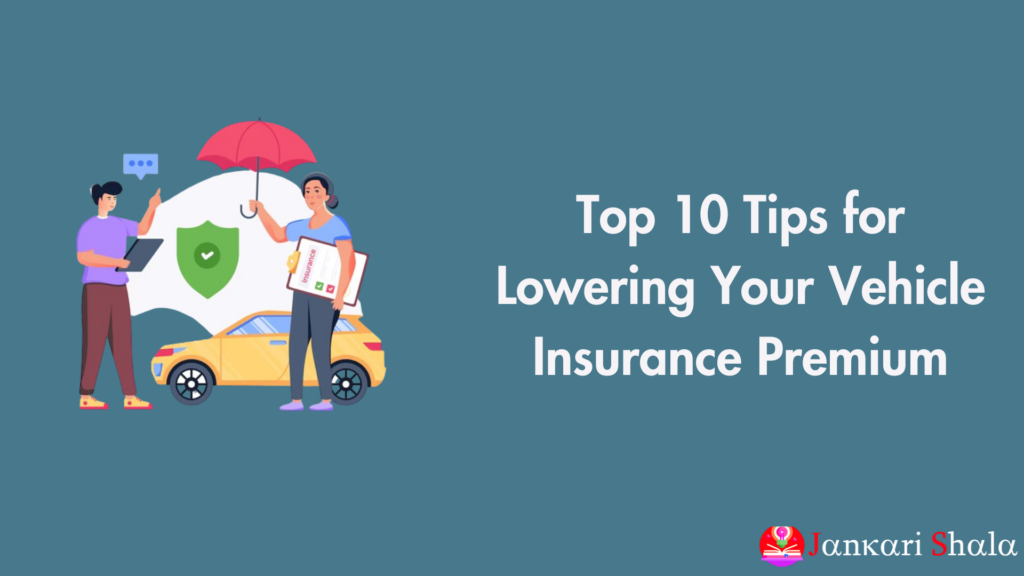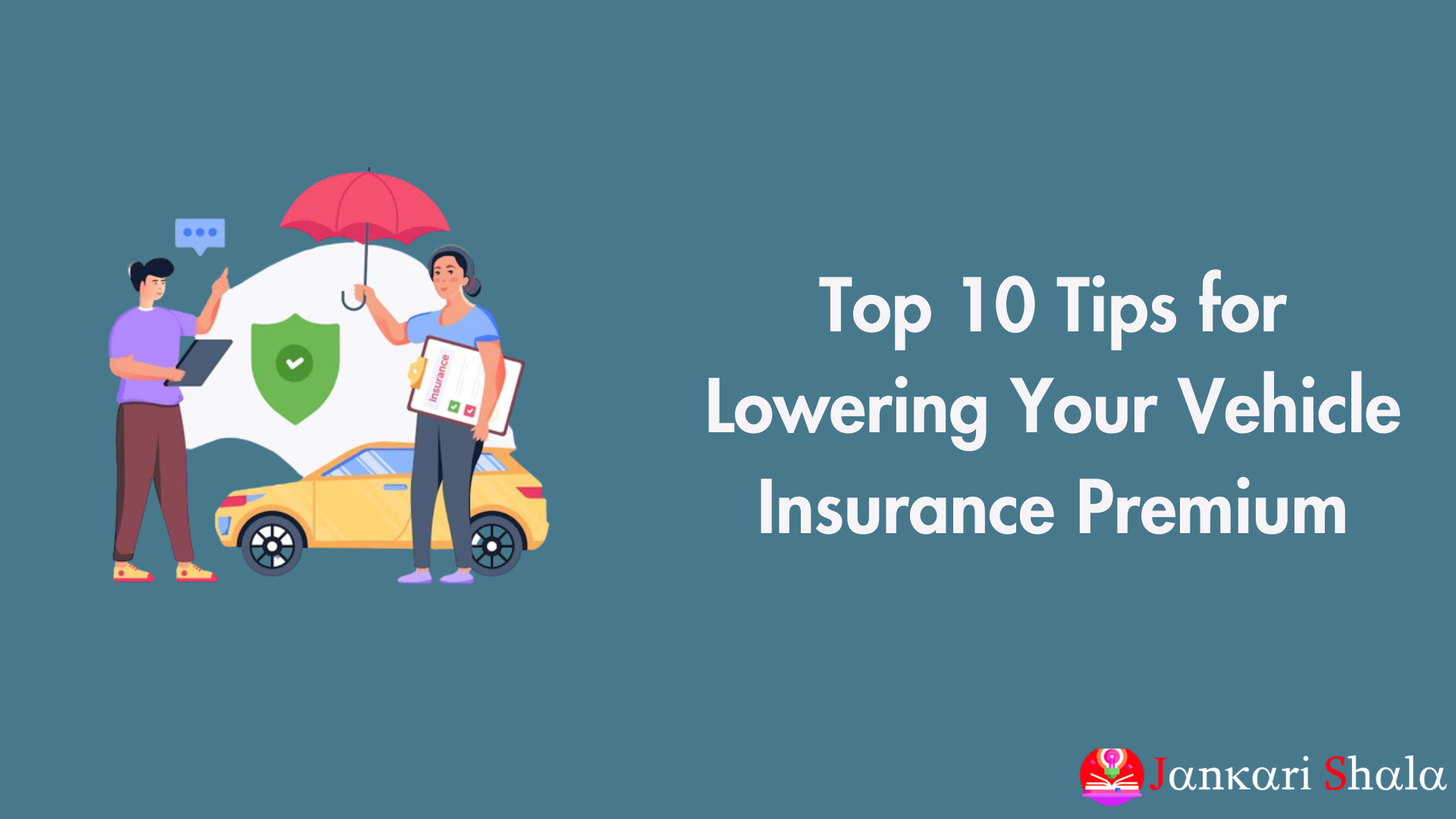In today’s fast-paced world, where every penny counts, finding ways to lower your vehicle insurance premium can feel like finding a needle in a haystack. Fear not, fellow drivers! With a little wit and wisdom, navigating the murky waters of insurance costs doesn’t have to be a daunting task. Whether you’re a seasoned motorist or a newly licensed driver, these Top 10 Tips will not only save you money but might even bring a smile to your face along the way. So buckle up (literally and figuratively) as we embark on this journey to cheaper insurance rates!

1. Shop Around Like You’re on a Mission
Imagine you’re shopping for the perfect pair of shoes—would you settle for the first pair you see? Of course not! The same principle applies when it comes to insurance. Different companies offer different rates, and shopping around can help you find the best deal. Don’t be afraid to compare quotes from multiple insurers. You might be surprised by how much you can save just by taking the time to explore your options.
2. Consider Bundling Your Policies
Are you currently insured with multiple providers? If so, you could be missing out on valuable savings. Many insurance companies offer discounts for bundling your policies together. Whether it’s combining your auto and home insurance or adding renters insurance to the mix, bundling can lead to significant discounts. Plus, it simplifies your life by having all your policies under one roof. It’s a win-win!
3. Maintain a Good Credit Score
Believe it or not, your credit score can impact your insurance premium. Insurers often use credit information to determine your level of risk as a policyholder. Maintaining a good credit score shows insurers that you’re responsible and likely to make payments on time. As a result, you may qualify for lower insurance rates. So, keep those credit cards in check and pay your bills on time—it could pay off in more ways than one!
4. Drive Safely (and Avoid Those Speeding Tickets!)
This one may seem like a no-brainer, but it’s worth mentioning. Your driving record plays a significant role in determining your insurance premium. If you have a history of accidents or speeding tickets, insurers may see you as a higher risk and charge you more for coverage. On the flip side, maintaining a clean driving record can lead to lower premiums. So, obey those speed limits, use your turn signals, and always drive defensively. Your wallet will thank you!
5. Increase Your Deductible (But Don’t Go Overboard)
Your deductible is the amount you agree to pay out of pocket before your insurance kicks in. Generally, the higher your deductible, the lower your premium. Consider increasing your deductible if you’re comfortable paying a bit more in the event of a claim. Just be sure not to set it too high, or you could find yourself in a financial bind if an accident occurs. Find a balance that works for your budget and gives you peace of mind.
6. Drive Less, Save More
Did you know that how much you drive can affect your insurance premium? It’s true! Many insurers offer low-mileage discounts for drivers who spend less time on the road. If you’re able to reduce your annual mileage—whether by carpooling, using public transportation, or working from home—you could qualify for lower rates. Plus, driving less is not only good for your wallet but also for the environment. It’s a win-win situation!
7. Choose Your Vehicle Wisely
Your choice of vehicle can have a significant impact on your insurance premium. Insurers consider factors such as the make and model of your car, its age, safety features, and even its theft rate when calculating your premium. Before purchasing a new vehicle, research insurance costs for different makes and models. Opting for a safe, reliable vehicle with good crash-test ratings and theft deterrents could lead to lower insurance premiums in the long run.
8. Take Advantage of Discounts
Insurance companies offer a variety of discounts that can help lower your premium. From good student discounts to discounts for completing a defensive driving course, there are plenty of ways to save. Ask your insurer about available discounts and see if you qualify. You might be surprised by the savings you can unlock just by being a responsible student or completing a simple course. Every little bit helps!
9. Review Your Coverage Regularly
As your life changes, so do your insurance needs. That’s why it’s important to review your coverage regularly to ensure you’re not paying for more than you need. For example, if you’ve paid off your car loan, you may no longer need comprehensive coverage. Or if you’ve moved to a safer neighborhood, you could potentially lower your premium. Take the time to review your policy and make adjustments as necessary to keep your coverage and costs in line with your current situation.
10. Be a Loyal Customer (But Don’t Be Afraid to Switch)
Loyalty can be rewarding when it comes to insurance. Many insurers offer discounts to long-term customers as a token of appreciation for their loyalty. However, loyalty shouldn’t prevent you from exploring your options. Periodically shop around to see if you can find a better deal elsewhere. If you do find a lower rate with another insurer, don’t hesitate to switch. Just be sure to consider all factors, including coverage and customer service, before making a decision.
Also Read:
FAQs
Q1: How can I find the best insurance rates?
A1: To find the best insurance rates, shop around and compare quotes from multiple insurers. Consider factors such as coverage options, deductibles, and available discounts.
Q2: Will my credit score affect my insurance premium?
A2: Yes, your credit score can impact your insurance premium. Maintaining a good credit score shows insurers that you’re responsible and can lead to lower rates.
Q3: Are there discounts available that I might not know about?
A3: Yes, many insurers offer discounts for things like bundling policies, safe driving records, completing driver education courses, and more. Ask your insurer about available discounts to see if you qualify.
Conclusion
Lowering your vehicle insurance premium might seem like a daunting task, but with a few smart moves, you can significantly reduce your costs. By shopping around and comparing quotes, increasing your deductible, bundling your policies, and maintaining a good credit score, you can find considerable savings. Additionally, driving safely, taking advantage of available discounts, choosing a car with a high safety rating, limiting your mileage, installing safety devices, and regularly reviewing your coverage can all contribute to lower premiums. Remember, it’s not just about finding the cheapest option, but about finding the right balance between cost and coverage. Implement these tips, and you’ll not only save money but also enjoy peace of mind knowing you’re adequately protected. So, go ahead, make these changes, and keep more of your hard-earned cash for the fun stuff—like that spontaneous road trip you’ve been dreaming about.
